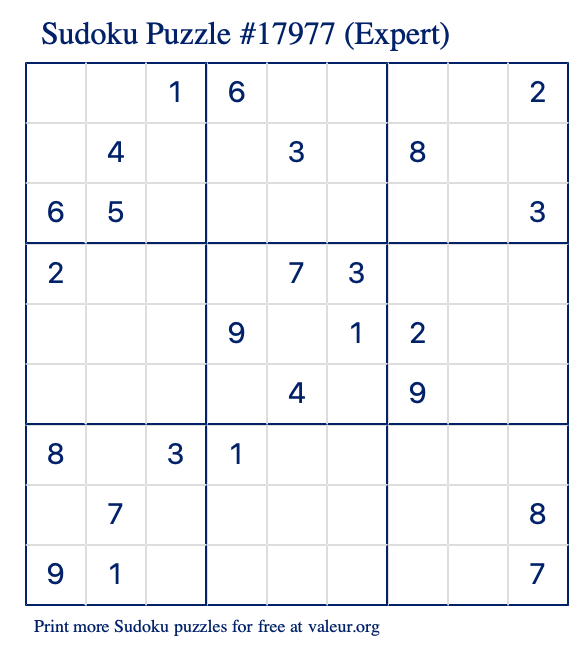

Then it is also not possible anywhere else in the same block.Īnd it is not possible anywhere else in the same block, When a candidate is possible in a certain block and row/column,Īnd it is not possible anywhere else in the same row/column, Row/Column Range Checking ("locked" candidates) examples This idea is more fully discussed mathematically in The 12 Rules of Sudoku. If a candidate k is possible in the intersection of A and B but not possible elsewhere in A, then it is also not possible elsewhere in B. Using "A" and "B" here for some number of rows, columns, cells, or blocks, then we have: Most people do this step without actually making any marks.įirst of all, if the rules discussed below sound pretty much the same, it's because they are all just permutations of the same Cross-hatch scanning is generally all that is necessary for "easy" puzzles. This process, referred to as cross-hatching, is repeated for each row and each column. "hidden" by the presence of the other marks. The 5 in this cell is called a "hidden single" because it can only be in this single location, and that fact is Since a number can only appear once in any given column or row and must appear exactly once inĪny given 3x3 block, the easiest place to start is to first checkįor cells that must hold a value because no other cell in a 3x3 block can hold that number.įor example, in this case the number 5 is excluded from all but one cell in the top center 3x3 block. But in that top middle block only one cell can hold a 5. In that cell the numbers 4, 5, 6, and 8 are all possible. The dots in the cell in row 3, column 5, indicate that You should always start a Sudoku by finding all the hidden singles.

Despite the name, hidden singles are far easier to find than naked singles. There is only one possible cell for a candidate. There is only one possible candidate for a cell a hidden single arises when This situation can arise for one of two reasons. When a candidate k is possible in only a single cell ofĪ row, column, or block, then that cell must be k. Hypothesis and proof and a sort of depth.Īll of these techniques are based on identifying all the possible "candidates" for a cell (indicated by marks)Īnd then eliminating them one by one until only one possibility remains in a given cell.Ĭross-Hatch Scanning (looking for singles) When all that fails, the Sudoku Assistant resorts to Almost-locked set analysis can be extended to grids, where itĪnd also to what I am calling almost-locked ranges. What I'm calling 3D Medusa analysis, includingĪnalysis. There are better approaches for solving extremely complex sudoku puzzles than emulating approaches humans might take.The Sudoku Assistant uses several techniques to solve a Sudoku puzzle:

All of the encoded techniques can be practically used by humans for solving puzzles (although some of the more complex techniques push that boundary).Īlthough my sudoku solver can solve much more complicated puzzles than I could, calling it an expert system is not an indication of its sophistication. The encoded knowledge was acquired from websites with advanced techniques for humans to use for solving sudoku puzzles. I've written a sudoku solver using a production system ( ) that I would consider to be an expert system. If you can't teach another person to practically do what your program is doing, it's not an expert system.īy that definition, what you've done is probably not an expert system since it would be too time consuming for a person to use the same technique. Whether a program is an expert system is subjective, but I'd say unless your program is encoding non-trivial knowledge acquired from a domain expert, it's not an expert system.


 0 kommentar(er)
0 kommentar(er)
